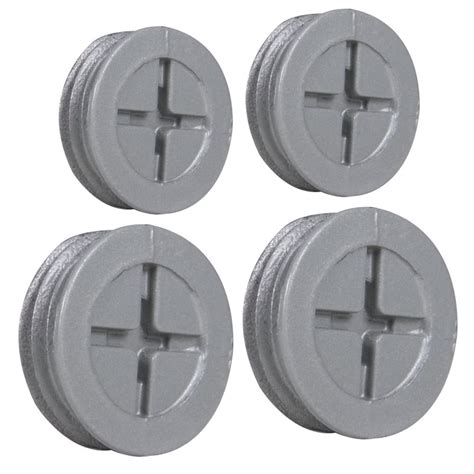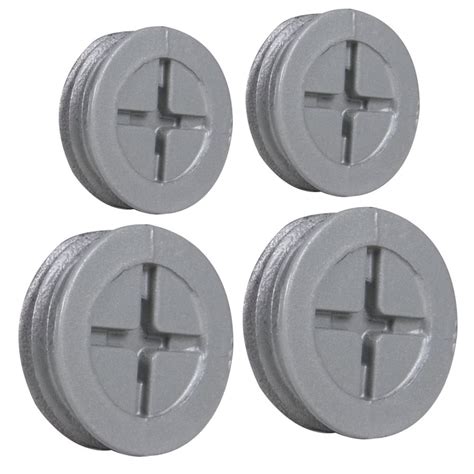electrical junction box knockout sizes Sizes 1/ 2 " thru 6" per proposed revision to NEMA Engineering Bulletin No. 71, Aug. . Or even a metal romex connector if you're coming in through the top of the panel, you can sneak the locknut along the top of the panel before you push the wire through it, then .
0 · knockout plugs for electrical outlet
1 · knockout plugs for electrical boxes
2 · electrical trade size chart
3 · electrical knockout size chart
4 · electrical box knockout sizes chart
5 · electrical box 1 2 knockout
6 · conduit hole saw size chart
7 · conduit fitting hole size chart
When designing sheet metal parts and enclosures, it is helpful to use these values as the basis for your design. It is most economical to use a single bend radius throughout the design, but if necessary, you can utilize multiple radii. Use this document to choose values that are both manufacturable and meet your needs.
Junction boxes have knockouts on top, bottom and sides. Top/bottom knockouts are 2 and 1-1/2 in - sides are 2, 1-1/2, 3/4 and 1/2 in. Photo shows box with components that may also be . A knockout for 1/2" conduit is 7/8", but the outside diameter of a 1/2" EMT fitting is about 3/4". 3/4" knockout is 1-3/32" (close enough to 1-1/8), . Sizes 1/ 2 " thru 6" per proposed revision to NEMA Engineering Bulletin No. 71, Aug. .Pedestal (35" Ht. x 4" Wd. x 4" Dp.) Choose from our selection of junction boxes, including corrosion-resistant washdown enclosures, indoor enclosures, and more. In stock and ready to ship.
Box knockouts are pre-measured to create perfectly sized openings for common conduit sizes, and each takes just a few seconds to remove. They can also be easily reclosed by knockout plugs and knockout seals later. The sizing requirements for pull boxes, junction boxes, handhole enclosures, and conduit bodies exist to prevent conductor insulation damage. Those requirements are in 314.28, and they apply to all conductors 4 AWG . How do I know what size to order? The electrical industry has common conduit sizes. EKO’s are routinely made for these common sizes. However, EKO tools must be . Section 314.16 specifies the minimum volume size of junction boxes required for various types of electrical conductors. The volume size of a junction box is measured in cubic inches. It is determined based on the number and .
These regulations describe in detail the required junction box size, depending on the number and size of conductors and fittings enclosed within the box. You’ll need to calculate both box volume and box fill when determining .How To Find Exact Knockout Size For Conduit? Contractors appreciate panels and enclosures with knockout holes because they can install wires and conduits without making new holes. You don’t have to tolerate smaller knockouts. You can enlarge them to accommodate larger conduits.Junction boxes have knockouts on top, bottom and sides. Top/bottom knockouts are 2 and 1-1/2 in - sides are 2, 1-1/2, 3/4 and 1/2 in. Photo shows box with components that may also be ordered separately.
A knockout for 1/2" conduit is 7/8", but the outside diameter of a 1/2" EMT fitting is about 3/4". 3/4" knockout is 1-3/32" (close enough to 1-1/8), and O.D. of 3/4" fitting is roughly 1". So basically 1/8" for fudging around?Sizes 1/ 2 " thru 6" per proposed revision to NEMA Engineering Bulletin No. 71, Aug. 1976. Both rigid conduit and intermediate metallic conduit are threaded and accept couplings, nuts, and bushings et cetera directly.Pedestal (35" Ht. x 4" Wd. x 4" Dp.) Choose from our selection of junction boxes, including corrosion-resistant washdown enclosures, indoor enclosures, and more. In stock and ready to ship.
Box knockouts are pre-measured to create perfectly sized openings for common conduit sizes, and each takes just a few seconds to remove. They can also be easily reclosed by knockout plugs and knockout seals later. The sizing requirements for pull boxes, junction boxes, handhole enclosures, and conduit bodies exist to prevent conductor insulation damage. Those requirements are in 314.28, and they apply to all conductors 4 AWG and larger ( Fig. 1 ). How do I know what size to order? The electrical industry has common conduit sizes. EKO’s are routinely made for these common sizes. However, EKO tools must be ordered for the actual size of the hole, not the conduit size. See conversion chart below: Form Up . Section 314.16 specifies the minimum volume size of junction boxes required for various types of electrical conductors. The volume size of a junction box is measured in cubic inches. It is determined based on the number and size of conductors within the box.

knockout plugs for electrical outlet
These regulations describe in detail the required junction box size, depending on the number and size of conductors and fittings enclosed within the box. You’ll need to calculate both box volume and box fill when determining the appropriate size for a junction box. What do these concepts mean?How To Find Exact Knockout Size For Conduit? Contractors appreciate panels and enclosures with knockout holes because they can install wires and conduits without making new holes. You don’t have to tolerate smaller knockouts. You can enlarge them to accommodate larger conduits.Junction boxes have knockouts on top, bottom and sides. Top/bottom knockouts are 2 and 1-1/2 in - sides are 2, 1-1/2, 3/4 and 1/2 in. Photo shows box with components that may also be ordered separately. A knockout for 1/2" conduit is 7/8", but the outside diameter of a 1/2" EMT fitting is about 3/4". 3/4" knockout is 1-3/32" (close enough to 1-1/8), and O.D. of 3/4" fitting is roughly 1". So basically 1/8" for fudging around?
Sizes 1/ 2 " thru 6" per proposed revision to NEMA Engineering Bulletin No. 71, Aug. 1976. Both rigid conduit and intermediate metallic conduit are threaded and accept couplings, nuts, and bushings et cetera directly.
Pedestal (35" Ht. x 4" Wd. x 4" Dp.) Choose from our selection of junction boxes, including corrosion-resistant washdown enclosures, indoor enclosures, and more. In stock and ready to ship.
Box knockouts are pre-measured to create perfectly sized openings for common conduit sizes, and each takes just a few seconds to remove. They can also be easily reclosed by knockout plugs and knockout seals later. The sizing requirements for pull boxes, junction boxes, handhole enclosures, and conduit bodies exist to prevent conductor insulation damage. Those requirements are in 314.28, and they apply to all conductors 4 AWG and larger ( Fig. 1 ).
How do I know what size to order? The electrical industry has common conduit sizes. EKO’s are routinely made for these common sizes. However, EKO tools must be ordered for the actual size of the hole, not the conduit size. See conversion chart below: Form Up . Section 314.16 specifies the minimum volume size of junction boxes required for various types of electrical conductors. The volume size of a junction box is measured in cubic inches. It is determined based on the number and size of conductors within the box.


cnc machine for hobby

knockout plugs for electrical boxes
Professional Sheet Metal Fabrication is the number one resource for sheet metal workers old and new Join veteran metalworker Ed Barr as he walks you through the ins and outs of planning a sheet metal project acquiring the necessaryDetailed chapters cover the right tool for the job, materials, welding, repairs, building from scratch and finish work, plus tips on how to repair and modify an existing part .
electrical junction box knockout sizes|electrical box 1 2 knockout